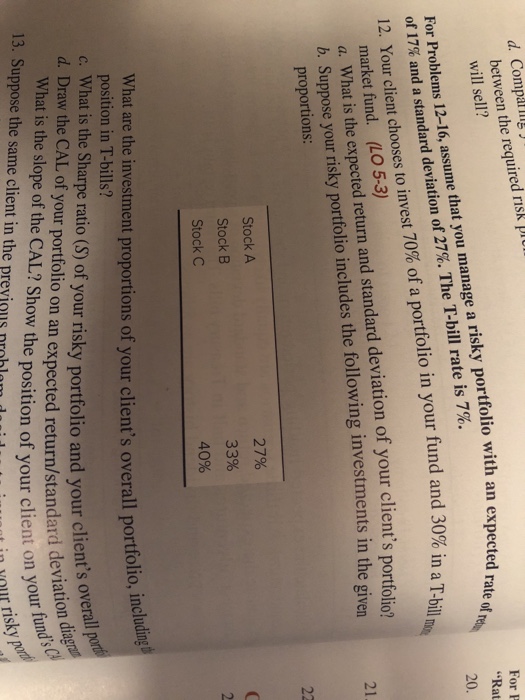Answered step by step
Verified Expert Solution
Question
1 Approved Answer
For problem12-16, assume that you manage a risky portfolio with an expected rate of return of 17% and a standard deviation of 27%. The T-bill
For problem12-16, assume that you manage a risky portfolio with an expected rate of return of 17% and a standard deviation of 27%. The T-bill rate is 7%.
12. Your client chooses to invest 70% of a portfolio in your fund and 30% in a t bill money market fund. 


Step by Step Solution
There are 3 Steps involved in it
Step: 1

Get Instant Access to Expert-Tailored Solutions
See step-by-step solutions with expert insights and AI powered tools for academic success
Step: 2

Step: 3

Ace Your Homework with AI
Get the answers you need in no time with our AI-driven, step-by-step assistance
Get Started


